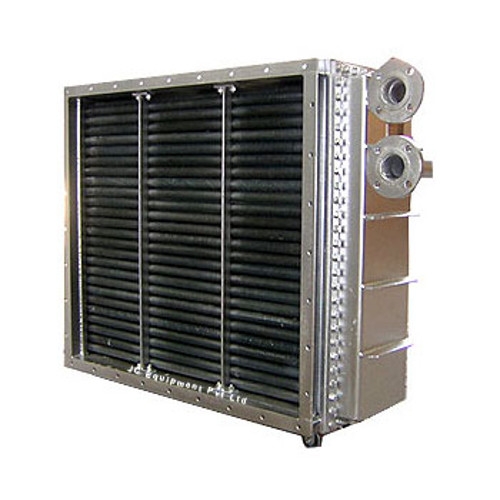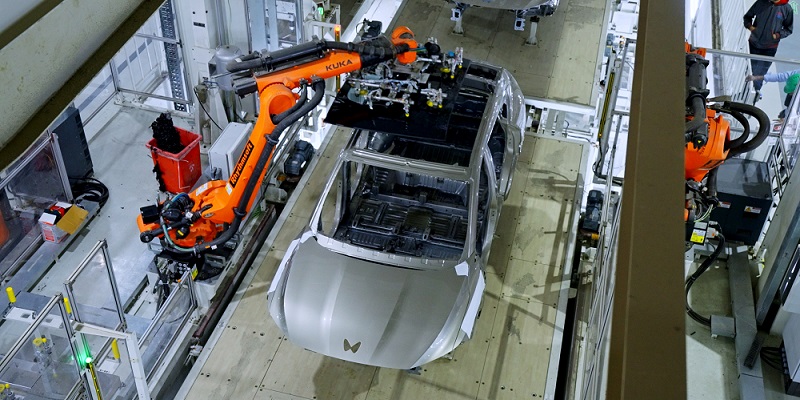Schedule a Call Back
Trouble-free EHC Fluid Operation
 Technical Articles
Technical Articles- Mar 02,12
 Phosphate ester fluids used in electro-hydraulic control (EHC) systems require careful maintenance if they are to perform at their peak. Peter Dufresne of EPT, a world leader in critical lubrication management, reveals the importance of detecting fluid problems in advance, and how maintenance practices can be improved to prevent costly servo valve failures.
Phosphate ester fluids used in electro-hydraulic control (EHC) systems require careful maintenance if they are to perform at their peak. Peter Dufresne of EPT, a world leader in critical lubrication management, reveals the importance of detecting fluid problems in advance, and how maintenance practices can be improved to prevent costly servo valve failures.
Phosphate ester fluids are the preferred hydraulic fluid for electro hydraulic control (EHC) systems due to their self-extinguishing fire properties. In this application, self-extinguishing fluids are important because of the high operating pressures and the proximity to high-temperature steam. While the benefits to health and safety are obvious, phosphate ester fluids require additional fluid maintenance to preserve their key properties within a relatively narrow operating range.  Every year, incorrect, inadequate or obsolete practices result in excessive maintenance costs and servo valve failures that amount to millions of dollars in lost revenue at plant level and billions of dollars industry-wide.
Every year, incorrect, inadequate or obsolete practices result in excessive maintenance costs and servo valve failures that amount to millions of dollars in lost revenue at plant level and billions of dollars industry-wide.
A detailed understanding of how phosphate ester fluids break down and how existing maintenance programmes fail to address these primary causes of fluid failure is therefore critical, as well as detecting fluid problems in advance and improving maintenance practices in order to prevent failures.
"Oxidation can be managed by carefully controlling water, oxygen and the presence of any metals that act as catalysts."
Phosphate Ester Fluid Breakdown
 Phosphate ester fluids require acid removal systems to maintain their fluid chemistry. In most cases the fluid-conditioning system is supplied by the turbine manufacturer as part of the initial turbine installation. These fluid-conditioning systems do not address the causes of fluid breakdown, but partially mitigate the effects by reducing the acidity. While acid-removal systems are essential, their selection and application should never adversely impact the
Phosphate ester fluids require acid removal systems to maintain their fluid chemistry. In most cases the fluid-conditioning system is supplied by the turbine manufacturer as part of the initial turbine installation. These fluid-conditioning systems do not address the causes of fluid breakdown, but partially mitigate the effects by reducing the acidity. While acid-removal systems are essential, their selection and application should never adversely impact the  strong>factors controlling the rate of fluid breakdown.
strong>factors controlling the rate of fluid breakdown.
Lubricant and fluid breakdown is caused by hydrolysis and oxidation. There are three key aspects that regulate the rate of hydrolysis and oxidation in this application; water, oxygen and metals. Hydrolysis can be minimised by controlling water. Oxidation cannot be eliminated, but it can be managed by carefully controlling water, oxygen and the presence of any metals that act as catalysts. An important question to ask is: does your existing phosphate ester fluid-conditioning system manage these three primary contributors of fluid breakdown or does the system actually increase the rate of oxidation?
Water: Misunderstood and Overlooked
 When phosphate ester fluids are maintained at less than 300 ppm of water, the fluid breakdown rate is approximately a tenth of that witnessed at a water level of more than 2,000 ppm (based on an internal estimate). Phosphate ester fluids are hygroscopic in nature and as a result will hold a high amount of water in solution (>1,800 ppm) compared with other fluids.
When phosphate ester fluids are maintained at less than 300 ppm of water, the fluid breakdown rate is approximately a tenth of that witnessed at a water level of more than 2,000 ppm (based on an internal estimate). Phosphate ester fluids are hygroscopic in nature and as a result will hold a high amount of water in solution (>1,800 ppm) compared with other fluids.
Since phosphate ester reservoirs are vented into the atmosphere, the water and gases in the fluid reservoir will always move towards equilibrium with the water and gases in the atmosphere that has direct contact with the fluid. In humid environments this is a significant problem, because the fluids will have unlimited access to water vapour, increasing the fluid breakdown rates by as much as ten times.
Generally, the fluid-conditioning system supplied with the turbine has no impact on water levels and as a result this key variable to oxidation is left unmanaged.
Oxygen: Abundant and Highly Reactive
In a normal phosphate ester fluid reservoir, the atmosphere above the fluid reservoir is primarily comprised of nitrogen and oxygen. Oxygen readily reacts with almost all other elements to form breakdown compounds. The fluid-conditioning system supplied with the turbine is not capable of managing oxygen levels and therefore cannot manage this key component of fluid breakdown.
Metals: The Source of all Fluid Deposits
There should be no metals in phosphate ester fluid other than phosphorous from which the fluid is made. Metals act as catalysts that drastically accelerate oxidation. A fluid with low metals of <10ppm will have a breakdown rate one hundred times less than that of a system with high metals (>100ppm) and high water (>2,000ppm). Aside from significantly increasing the rate of oxidation, metals produce chemical reactions that create solids. Metals are the basis of all fluid deposits and gelling products in phosphate ester systems. Depending on the type of acid removal filter in your fluid-conditioning system, it is highly likely that the filter is contributing metals to your fluid.
Water, oxygen and metals that regulate the rate of oxidation and fluid breakdown are not managed by the fluid treatment system supplied with the turbine. As a consequence, phosphate ester fluid systems suffer from unnecessarily high levels of acid production that make these fluids difficult to maintain. To effectively manage phosphate ester fluids, you need to control hydrolysis and oxidation - and this requires a different set of maintenance tools.
How to Detect Fluid Problems Early?
Aside from the standard analysis that includes acid number, water, particulate, viscosity and resistivity, all phosphate ester fluids should be routinely tested for dissolved metals, suspended solid filtration at 0.45 microns, and if using Selexsorb have resistivity tested pre and post 0.22 micron filtration.
- Dissolved metal testing measures the amount of catalyst in your fluid, which correlates to the rate of fluid breakdown and the propensity for fluid deposits to form on servo valves.
- Patch testing and patch weight at 0.45 microns will quantify the weight of solid contamination that is suspended in the fluid. A dark patch result can be an indicator of fine carbon produced from a severe form of fluid breakdown known as thermal degradation.
- Testing resistivity before and after 0.22 patch filtration will isolate the impact of silica, which comes from Selexsorb and is a dielectric that commonly interferes with the resistivity test, providing an artificially high resistivity value, and therefore a false assurance to users that servo valve problems will not occur.
Updating Fluid Maintenance Practices
The key to preventing problems in phosphate ester EHC applications is to manage hydrolysis and oxidation levels rather than attempting to treat the symptoms of fluid breakdown. Power plant maintenance professionals require better tools so that they can manage hydrolysis and oxidation and adopt a preventative rather than a reactionary programme.
Existing treatment systems are often ineffective, and use acid-removal filters that contribute metals that actually accelerate fluid breakdown and are the basis of deposit formation. Products that contribute metals should not be used on your fluid and existing metals should be removed with ICB
Related Products

Fieldpower Power Bus System
Weidmueller Electronics India offers FieldPower power bus system.

Finned Tube Heat Exchanger
Simon Coil And Heat Exchanger manufacturers
finned tube heat exchangers.

Ceramic Reinforced Grinding Wheels
Rüggeberg GmbH & Co KG,
PFERD-Werkzeuge, has launched new reinforced grinding wheels with ceramic oxide
grain.














